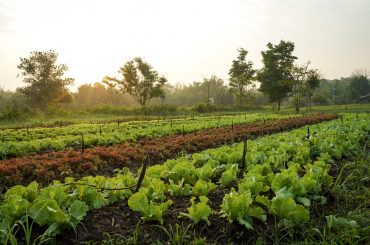There is always a demand for milk in India in every season or weather. Milk production in India is estimated to grow three to four percent annually. It is a very profitable business in India if you strategize and act accordingly. Dairy farming is widespread in both rural and urban areas. Read along to know the ways that helped dairy farming in India grow exponentially.
Dairy farmers in India face several problems due to their unawareness of the latest methods and technologies and lack of knowledge. If you plan to start a dairy farm, then read this article carefully. You can initially start a small-scale business and then expand it after becoming fully aware of this business’s ins and outs.
A step by step guide to Dairy agriculture plan in India
Starting a dairy farming business and making it bloom requires both time and effort at the farm. This business will keep you very busy because you will need to pay attention to it twenty-four by seven. This business will make you extremely rich, but if you are not ready to give your all, you should consider opting for a different company. We will at first look at the business plan with ten to fifteen cows.
Some of the basic requirements for this business in India are the following.
- Proper shed construction.
- Plenty of land area for the cultivation of green fodder (1 to 2 acres of land for fifteen cows).
- Enough water supply.
- Good breeds of cows ( Breeds such as jersey, hf, Sahiwal, and so on).
- Proper fodder management (dry fodder, green fodder, and concentrate).
- Labour
- Proper vaccination schedule.
Building sheds as per dairy farming plan in India.
The shed for the cattle must be well defined, commodious, sterilized, and properly disinfected. This must be done to ensure the proper health of the cattle. For now, let us take a herd of ten cows for example. Based on scientific studies, it is seen that one cow must get a 7ft x 11ft area. This area is not fixed as it also depends on the size of the animal. A minimum area of 80ft x 12ft should be available for ten cows.
Cowshed can either be constructed in the closed housing way or open housing way. Nowadays, open housing cowshed is not advised since we keep high yielding cattle that require more care. Therefore, closed housing cowsheds are considered a better option. Closed housing is then classified into two arrangements. These arrangements are:
- Head to Head arrangement
- Tail to tail arrangement
The head-to-head arrangement is more affordable than the tail-to-tail arrangement. Electricity and proper supply of water are essential for high-yielding cows such as jerseys and HF. Fans and coolers are also needed in the summer season.
Fodder Management
The cows need proper nutrition in their fodder and other mineral mixtures. For a cow to produce 2.5 liters of milk, we must provide them with 1kg of hay. For example, a cow must be supplied with 4 kg of concentrate with the mineral mixture to yield 10 liters of milk. There are three types of fodder: dry fodder, green fodder, concentrate, and mineral mixture.
Types of fodder used in dairy farming in India
Two-thirds of the supplements consist of dry fodder. Dry fodder comprises various constituents: wheat hay, paddy straw, choker, etc. Green fodder is meant for developing the cows’ immune system. It also contains all the essential nutrients required for producing a good yield of milk. Leguminous crops like barley, gram, maize, and masoor, etc., constitute green fodder.
A mineral mixture is necessary for maintaining the good health of the cattle. The mineral and protein content in the fodder positively shows in the milk. Appropriate quantity of all these fodders must be calculated per cow and given to cattle.
Adequate water supply
An adequate quantity of water supply is a must. Water is meant for the cattle to drink, clean the cows and shed, and mix fodder.
Breed selection- High yielding popular varieties
The profit gained through dairy farms entirely depends on the quantity of milk produced. Therefore, the right breed of cows must be selected. Jersey and Holstein are the best breeds.
Timely mating and insemination are needed
Mating and insemination usually take place every three months after cows’ birth their calves. The time taken to reach the maturity phase is different in Indian breeds and high-yielding breeds like Jersey and HF. One must pay attention if the cow is calving every 13 months. Due to this, the number of cattle will increase. If your cow is not giving birth after 13 months of mating, there could be some fertility problems. Seek medical help in such cases.
Artificial insemination in dairy farming
Due to advancements in technology, it is now possible to get the desired traits in a calf. It is achieved through a process called Assured Genetics. Extreme care and attention should be given to pregnant cows. Do not inject oxytocin into the cow when she is pregnant. It could kill the calf.
Vaccination schedule
Vaccination should be timely provided to the cattle. It is done to prevent the cattle from being affected by any harmful disease. Deworming must be done before giving any vaccination.
Precautions for maintaining cattle
Precautions for maintaining a dairy farm:
- Observe the mood of each cow. It should be done every morning before collecting milk.
- Check if they are chewing the cud properly. If not, there could be some problems such as fever or internal parasitic load. Consult a veterinarian immediately in that case.
- Clean the sheds and provide adequate fodder before milking.
- Allow the cattle to graze outside but keep them from eating plastic covers or waste papers.
- Do not give raw wheat or rice as fodder as it is difficult for them to digest.




